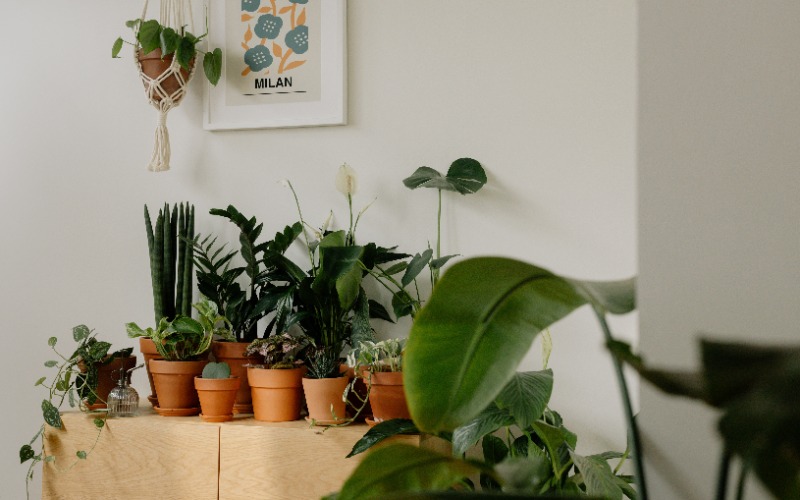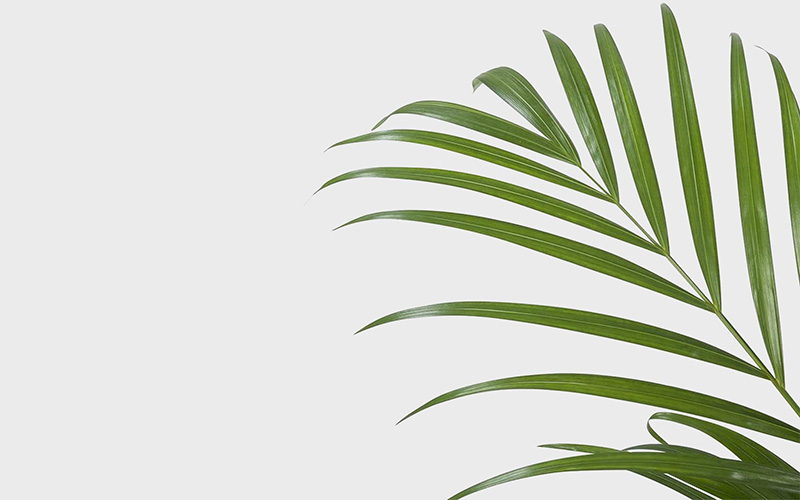
Deliver to
Luxembourg
 English
English

For most plants an essential ingredient to grow: light. Although not all plants need the same amount of light. For example, the Banana plant prefers to grow in direct sunlight, just like in nature. A Monstera thrives better in indirect sunlight, and a Dracaena prefers the half shade.
So many different plants, with so many different requirements when it comes to light. How do you know exactly what your plant needs? And what kind of light enters your house?
In most cases, plants make it very clear that they are not in place. This can mainly be seen by the color of the leaves. Too much light will burn the leaves of the plant. In most cases the leaves will turn yellow and in later stages brown.
If your plant doesn’t get enough light you can see this mainly from its position. For example, plants often hang down a bit. What also stands out? A plant that doesn’t get enough light will grow considerably less. A plant needs sunlight to grow, and if it gets too little it will stop growing.
To find out how much light is actually coming in you can do a simple light test. At 12:00 noon take the spot of your houseplant. Stand on its spot as precisely as possible.
Despite the size of your window, light can be blocked by buildings or trees around your house. 12:00 is the lightest time of day, and therefore the best measure.
Are you standing in the right place? Look closely at the shadow on the ground. Is it strong, or is it light? The strength of the shadow indicates what kind of light enters your house. Curious about the light in which your plant stands? Click on the tab that is right for you.


Direct sunlight is the light coming in directly from the window. Plants that love direct sunlight are true sun worshippers. They need at least 5 hours of sunlight a day! Plants that like direct sunlight are often large plants in nature. These plants often get sunlight directly on their crown. We recommend to place sun lovers directly at the window. Or on the windowsill of course! It is best to place the sun worshippers near a window facing south. In the south the most sunlight comes in.
Indirect sunlight is filtered light. In nature, indirect sun lovers are mainly plants surrounded by larger plants. Plants that like indirect sunlight get a maximum of 5 hours of sunlight per day. Indirect sunlight is certainly not the light coming in through the window. The pitch is at least 3 meters from a window. Don’t have this space? Then you can also choose to place the plant next to the window. As a filter you can use a transparent curtain.
Partial shade is filtered light in which a plant gets a maximum of 3 to 4 hours of sunshine. Plants that like to be in the half shade are often less large houseplants. In nature they stand in the shade of large trees and plants. Literally! The most important thing is that the sunlight is filtered. Put a plant that enjoys half shade not 4 hours next to the window, and then in a place without sunlight. This is something a plant really is not happy about. In these 4 hours the plant will get direct sunlight, which can even damage its leaves.
Shadow does not mean that there is no light at all. This is absolutely not true! Even plants that enjoy the shade get sunlight. However, this is very filtered. Shadow plants prefer to get a maximum of 2 hours of sunlight per day. The location of shadow plants is usually around a corner, behind a cupboard or other large piece of furniture. This blocks most of the light. It is certainly not advisable to put shady plants at the window for 2 hours, and then move them after a place without sunlight.
If you only look at plants that like different kinds of light, there are four types of plants. For example, you have plants that like direct sunlight. Think of a Strelitzia, Banana plant and a Pancake plant. These are real sun worshippers and prefer to stand in the sun all day long. Just like in nature.
In addition to direct sunlight, there are also plants that like indirect sunlight. These are plants that really like the sun, but just don’t tolerate it as much. In nature, these plants often have light deflected by larger plants. A good example is the pineapple plant. The pineapple plant remains very small, so it soon grows under large plants.
In addition, there are of course plants that like the shade. As far as shade is concerned, we use two species. The half shade and the shadow plants. In the half shade a plant gets sunlight, but often very filtered and only a few hours a day. Shadowplants do need light. However, this is very little!
A strong shadow
Is the shadow strong and can you outline it well? This means that your plant is in a place with direct sunlight.
A present shadow
Do you see a less strong shadow, but can you still see the silhouette? That has to do with indirect sunlight.
An unclear shadow
Can’t you see a silhouette of the shadow? Then you are dealing with a pitch in the half shade.
Doesn’t the kind of light come a bit unexpected? Put all your plants together and look for the light they need. Is there a houseplant in direct sunlight, but does it need half shade?
From that much light to much less can be a big shock for your plant. Therefore, do not immediately switch to a new location. Let yourself and your houseplant get used to the new spot. Always a few meters to the back for the right new spot.